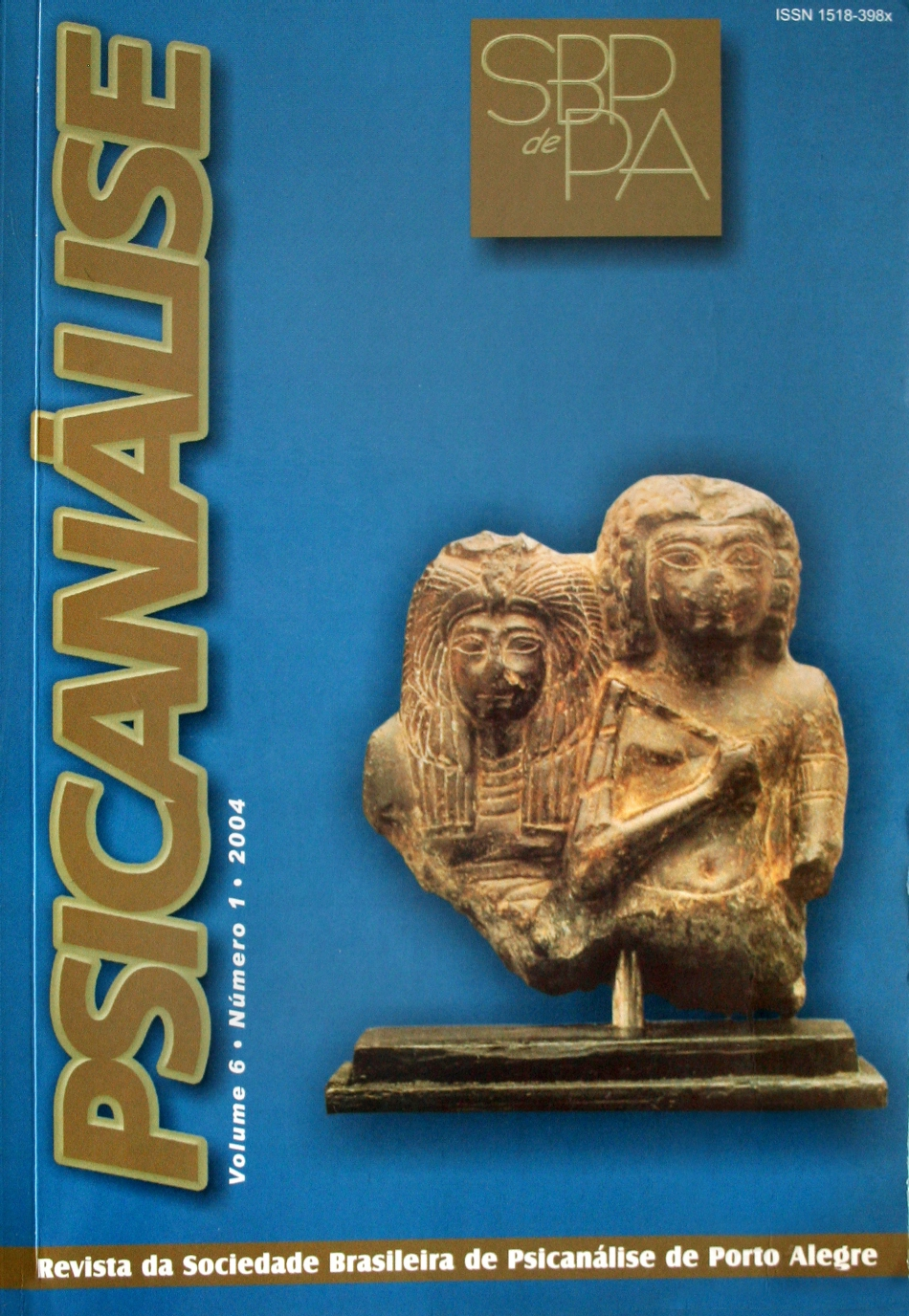The psychoanalyst as an artisan in technics
DOI:
https://doi.org/10.60106/rsbppa.v6i1.145Keywords:
Psychoanalitical technique, Creativity, Intersubjective dialogueAbstract
In this work, the author intends to attain deep and subjective relations between patient and therapist. He intends to examine what underlines words to reach some ideas about “emotional dialogue” in the relationship between patiente and therapist. Such dialogue results in what we know as “a unique and non-reproducible relationship”, and is responsible for the psychoanalysis as a creative act and for the correct employment of the psychoanalytical technique.
Downloads
References
BION, W.R. (1965). Transformations. London: Karnac Books.
______. (1967). Second thoughts. London: Heinenmann.
______. (1973). Atenção e interpretação. Rio de Janeiro: Imago, 1973.
______. Notas sobre memória e desejo. In:______. Melanie Klein hoje. Rio de Janeiro: Imago, 1990. v. 2.
GIOVACCHINI, P. Contemporary perspectives on technique. In:______. Master clinicians on treating the regressed patients. Northvale: Jason Aronson, 1990.
GOLDBERG, P. (1990). The holding environment: conscious and unconscious elements in the building of therapeuitc framework. In:______. Master clinicians on treating the regressed patients. Northvale: Jason Aronson.
OGDEN, T. Projective identification and psychotherapeutic technique. Northvale: Jason Aronson, 1982.
PETRUCCI, J.L.F. Manejo técnico do paciente de difícil acesso. In: CONGRESSO BRASILEIRO DE PSICANÁLISE. 11, 1987. Relatório Oficial da SBPRJ... Rio de Janeiro: SBPRJ, 1987.
STEINER, J. Os objetivos da psicanálise. Revista Brasileira de Psicanálise, v. 26, n. 4, 1992.
Downloads
Published
How to Cite
Issue
Section
License
I attribute the copyrights that belong to me, on this work, to SBPdePA, which may use and publish it by the means it deems appropriate, including on the Internet or in any other computer processing.
















